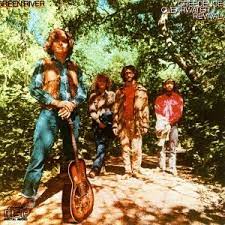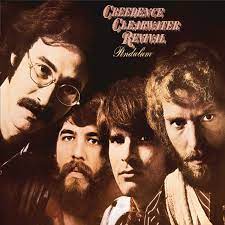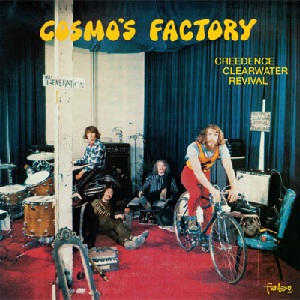Tutorial Pricing: $3.25ea OR any 10 for $10
(use code "Any10410" at checkout)
Paid Requests for $25ea
(comes with any 8 freebies -> so 9 for $25)
100's Of Free Demos & Chord Sheets
Creedence Clearwater Revival Popular Songs
On The Acoustic
On this Creedence Clearwater Revival popular songs page you can explore 13 more songs by this great band from the 1960s. Help yourself to the free pdf chord sheets and demos. If you need or would like to support this site, there are full tutorial lessons available for a small fee.

Bad Moon Rising
Before You Accuse Me
Born On The Bayou
Cottonfields
Down On The Corner
Fortunate Son
Green River
Have You Ever Seen The Rain
Hearts Of Stone
Hello Mary Lou
Hey Tonight
I Ain't Never
I Put A Spell On You
Jambalaya
Long As I Can See The Light
Looking Out My Backdoor
Proud Mary
Ramble Tamble
Rock & Roll Girls
Someday Never Comes
Southern Streamline
The Old Man Down The Road
Travelling Band
Up Around The Bend
Who'll Stop The Rain
You're The Reason
Creedence Clearwater Revival Popular Songs
Chords, Lyrics, Demos, Tutorials

Bad Moon Rising was
the lead off single from the bands Green River album which was released
in the spring of 1969, four months before the album came out. This
track was also written by John Fogerty.
The song reached #2 in the US and #1 in the UK. The inspiration came to John Fogerty after watching a 1941 film called The Devil And Daniel Webster.
With its irresistible melody and catchy lyrics, this song is a timeless classic that has been covered by countless artists.
This one is played in standard tuning with a root down root up down and repeat rhythm pattern. Some lead required with the chords D, A and G.
Jump To Top

Before You Accuse Me was covered by CCR but never released as a single. It's an old Bo Diddley song from 1957.
The track appears on their debut album Creedence Clearwater Revival album.
Play this number with a down up down up and repeat rhythm pattern in standard tuning. Some lead required with the chords E, A and B7.
Jump To Top

Born On The Bayou was a single from the 1968 album Bayou Country.
Surprisingly this song never charted anywhere. The only other single in the 60s and 70s that failed to chart somewhere was their very first single called Poterville.
For rhythm you'll require some arpeggio along with a down up down up and repeat rhythm pattern and down strokes in the picking section. In standard tuning with the chords E7, D, A and E.
Jump To Top Creedence Clearwater Revival Popular Songs

Cotton Fields was a track on the 1969 album Willy And The Poor Boys and was released as a single and made it to #1 in Mexico.
This version was a cover of this old song that Lead Belly recorded in 1940.
This one I play in standard tuning with the chords G, C and D and a C7 and D7 thrown in using a steady down up down rhythm pattern. Some lead required here.
Jump To Top

Down On The Corner was one of two singles from the 1969 album "Willy And The Poor Boys" and was written by John Fogerty.
"Down on the Corner" peaked at #3 on the Billboard Hot 100 chart in 1969 and reached the top 10 in several countrues.
The three chords here are C, G and G with some lead required in standard tuning. Play a steady up and down shuffle rhythm pattern with some riffs.
Jump To Top

Fortunate Son was the other single released from the Willy And The Poor Boys album.
This single managed to reach #3 in the US and #2 in Australia but never quite made it to the top. It was also written by John Fogerty. The track is a symbol of protest against the Vietnam War.
The song's distinctive guitar riff was created by John Fogerty to mimic the sound of a military march, adding to its rebellious and anti-establishment tone.
Some lead required with the chords G, F, C and D in standard tuning. The rhythm is mainly down strokes.
Jump To Top

Green River was
without a doubt the bands most successful single release. Bad Moon
Rising, Lodi, Green River and Commotion all came from that record. This
track was also written by John Fogerty.
Green River" reached #2 on the Billboard Hot 100 chart in 1969 and was a top 10 in several other countries.
The title track of the album, "Green River" is a homage to the Green River, which runs through the band's home state of California. It evokes a sense of nostalgia for the countryside and the joys of simpler times.
Play a down up down up rhythm pattern with some riffs blended in throughout and in standard tuning. E, C and A are the chords.
Jump To Top Creedence Clearwater Revival Popular Songs

Have You Ever Seen The Rain was the first of two singles released by CCR in 1971 from their Pendulum album. The song was written by John Fogerty
And this song was a huge hit across several countries and did make it to #1 in Canada. In the US, Have You Ever Seen the Rain reached #8 on the Billboard Hot 100 chart in 1971.
This is probably one of the first CCR songs most people learn on guitar because it's a simple play and a great tune.
The chords here are Em, C, G, D, D/Gb and Em/D in standard tuning. No lead but a few riffs with the down down up down up down up and repeat rhythm pattern.
Jump To Top

Hearts Of Stone was a #37 in the US and a #35 when it was released as a single back in 1973 from John Fogerty's first solo album after the breakup of CCR.
The track can be found on The Blue Ridge Rangers album.
I play a capo 2nd fret here in standard tuning along with a root down root up down up and repeat rhythm pattern. A bit of lead with the chords E, A and B7.
Chords & Lyrics
Jump To Top

Mary Lou to my knowledge was never released as a single.
It was a track from their last album in 1972 called Mardi-Gras. This is an old Gene Pitney song that was first recorded by Johnny Duncan and then in 1961 by Ricky Nelson.
Some lead here blended into the root down up down up down up and repeat rhythm pattern and in standard tuning. For chords you'll need an A, D, E, Db7, Gbm and a B7.
Jump To Top Creedence Clearwater Revival Popular Songs

Hey Tonight charted in three countries when it was released as a single in 1971 from the Pendulum album.
It hit #1 in Belgium and Denmark and #9 in Australia and was written by John Fogerty. Hey Tonight reached #8 on the Billboard Hot 100 chart in 1971.
The song's upbeat tempo and infectious energy make it a fan favorite. It is often performed live and is known for its catchy chorus and memorable guitar riff.
This one is played with down strokes for rhythm in standard tuning and with lead work required. For chords play an E, A, B, Gb and a B7.
Jump To Top

I Ain't Never was a track from the 1973 album "The Blue Ridge Rangers" which was released in 1973.
The song was never released as a single.
I play this number with drop D tuning with a down up down up down up and repeat rhythm pattern and some lead blended into the chords. Only an A, D and E in this one.
Chords & Lyrics
Jump To Top

I Put A Spell On You was
released on several albums. The first was in 1968 from the Creedence
Clearwater Revival album and never cracked the top 40. The track was not
written by John Fogerty but instead by
Screamin' Jay Hawkins, which was a hit for him.
A re-release in 1972 fared better with the song reaching #12 and #3. The final release was in 1990 but the song only charted in The Netherlands at #64
CCR's rendition of "I Put a Spell on You" showcases John Fogerty's powerful vocals and the band's ability to infuse their own style into a classic blues-rock song.
For chords here you'll need an Em, Am, B7, C, F, D, G and A in standard tuning and some lead. Play a down down down up down down and repeat rhythm pattern.
Top To Top

Jambalaya was a single release back in 1973 and peaked at #5 in Canada and climbed to #16 in the US.
the song can be found on the album "The Blue Ridge Rangers".
A capo 2nd fret is where they are here and with drop D tuning. Only the D and A chord required here as you play a root down root up down up and repeat pattern.
Chords & Lyrics
Jump To Top Creedence Clearwater Revival Popular Songs

Long As I Can See The Light was mainly a B-side to Looking Out My Back Door but still managed to reach #20 in the UK and went to #1 in Norway.
The song hails from the 1970 album Cosmos Factory and featured John Fogerty playing electric piano and sax on the track which was written by John Fogerty
Although it was not released as a single, the song has become a beloved track in CCR's discography.
Played in standard tuning with a down down up down up and repeat rhythm pattern. Some lead with the chords G, C/G, Em, C7 and D.
Jump To Top

Looking Out My Back Door was from their 1970s album Cosmos Factory and managed a #2 spot. This was their only #1 song if you count the Cash Box chart, where it did reach the top.
I play a root down up down up down up rhythm pattern here with some lead required and in standard tuning. For chords I play a D, Bm, G and A and for the key change play a B7, A7, E, Dbm and the A once more.
Jump To Top

Proud Mary was another huge single from CCR in 1969 from their Bayou Country album and was written by John Fogerty.
This one made it to #1 in Austria and was a top 10 across several countries including a #2 in the US and Canada. CCR never had a #1 hit in the United States.
I play a drop D tuning here with a down up stop up down up stop up rhythm pattern. The chords here are C, A, G, F, D and a Bm with some lead required.
Jump To Top

Ramble Tamble is a popular CCR song but was never released as a single.
It appears on the Cosmos Factory album of 1970 and was written by John Fogerty.
While it wasn't released as a single, "Ramble Tamble" is an album track that showcases CCR's ability to explore extended instrumental sections and display their prowess as a rock band.
Another one I play with drop D tuning and a root down up down up down up rhythm pattern with some down strokes and some steady up and down shuffle rhythm. Some lead with the chords D, C, G, Am, G6 and F.
Jump To Top Creedence Clearwater Revival Popular Songs

Rock & Roll Girls is not a 60s song but hails from 1985 and managed to reach #5 on the US rock charts. John says he got the idea from watching his teenage daughter and her friends.
Some lead in this one as you play all down strokes for rhythm with the four chords G, C, D and Em in standard tuning.
Jump To Top

Someday Never Comes was released as a single and appears on the last album from 1972 called Mardi Gras.
The song peaked at #25 in the US and was the last single ever released by CCR before they officially disbanded in 1972.
A capo 2nd fret keeps you in the original key in standard tuning with the chords A, E, Gbm, Dm, F, D, Bm, A#, F, Dm, D#m, F#, D# and a Gm. No lead with a down down up down up down up and repeat rhythm pattern and then later its a down down up down down up down up pattern.
Jump To Top

Southern Streamline was a 1997 release from the album "Blue Moon Swamp".
The song charted at #67 on the US country charts.
I play a drop D tuning here and a capo 2nd fret. Some lead required with a root down up down up down up and repeat rhythm pattern while playing the chords D, G and A7.
Chords & Lyrics
Jump To Top

The Old Man Down The Road hit #1 for John Fogerty in 1984, his first solo #1 song and his only #1 hit. CCR had no #1 hits in the US so this must have felt good.
The track can be found on the album, "Centerfield".
For rhythm here you can play us down strokes along with the odd up stroke. Some lead here in standard tuning while playing the chords E, G, C, D and an E7.
Chords & Lyrics
Jump To Top Creedence Clearwater Revival Popular Songs

Travelling Band was written by John Fogerty and was included on the 1970 album "Cosmos Factory" and was written by John Fogerty.
The song peaked at #2 in the US and #8 in the UK.
Travelin Band" peaked at #2 on the Billboard Hot 100 chart in 1970 and reached #8 in the UK.
It became one of CCR's biggest hits and a concert staple.
I play capo 2nd fret on this one with a down up down up and repeat rhythm pattern. Some lead with the chords E, A and B.
Jump To Top

Up Around The Bend was the A-side with the song Run Through The Jungle. The song reached #1 in Australia and The Netherlands and was a top 10 in several other countries. The track was written by John Fogerty and
reached #4 on the Billboard Hot 100 chart in 1970.
It was released in 1970 from the Cosmos Factory album.
The chords here are D, A, D/Gb and G while playing all down strokes for rhythm. Played in standard tuning with the chords D, A, D/Gb and a G
Jump To Top

Who'll Stop The Rain performed quite well on the charts, reaching number 2 on the Billboard Hot 100 chart in the United States in 1970.
This one is played in G but sung on the high end of G, so because
it's out of my range, I'm using a capo 3rd fret and singing on the low
end of A#. The chords you'll need are G, D, Em, C, Bm and an Am. There
ks no lead but I put a break in this one with the rhythm root up down up
and repeat in standard tuning.
Chords & Lyrics
Jump To Top

You're The Reason and an old Bobby Edwards number from 1961. John Fogerty put it on his album "The Blue Ridge Rangers" in 1973.
The song was never released as a single.
For rhythm play a root down up root up down up and repeat pattern in standard tuning.Some lead required with the chords C, G, C7, F and a G7.
Chords & Lyrics
Jump To Top Creedence Clearwater Revival Popular Songs
Thanks for stopping by my Creedence Clearwater Revival popular songs page and I hope the info here was useful.
If you liked this Creedence Clearwater Revival popular songs page you might also like ... (click images)
Popular Songs From The 60s


